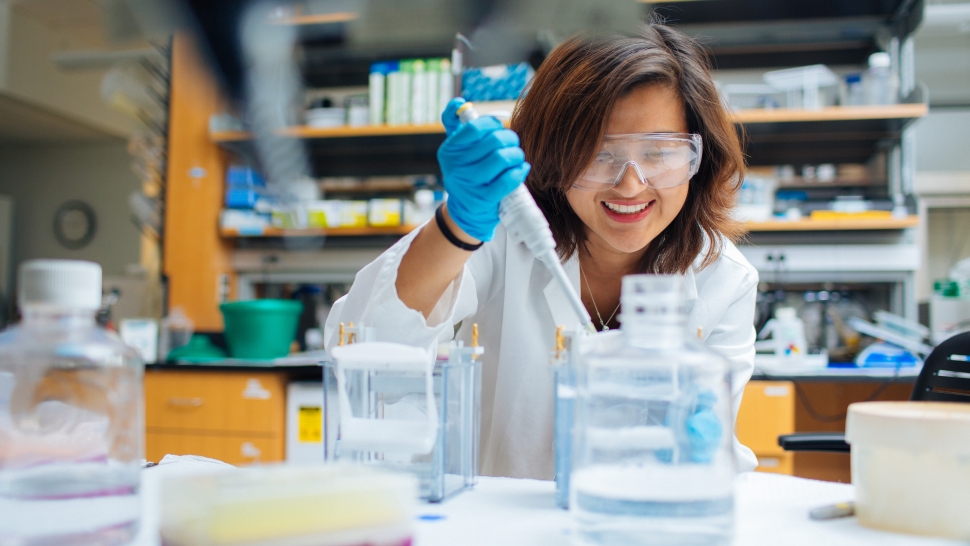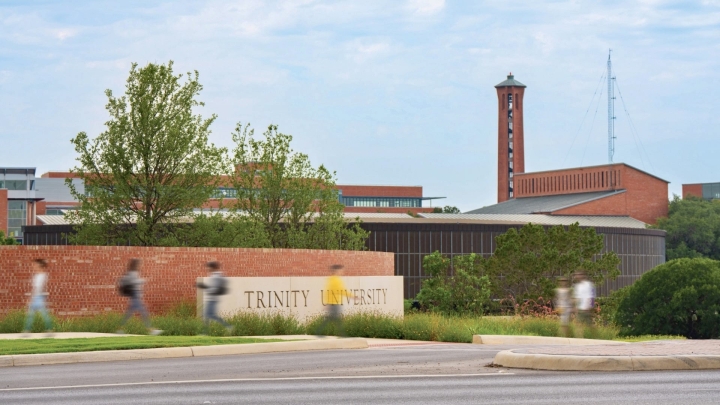
Trinity has received a grant from the Howard Hughes Medical Institute (HHMI) designed to make its first- and second-year STEM (science, technology, engineering, and mathematics) courses more inclusive to all students. Chaired by biology professor Michele Johnson, Ph.D., and co-chaired by chemistry professor Laura Hunsicker-Wang, Ph.D., the grant connects leaders from 100 schools via six learning community clusters. Trinity’s cluster is composed of 15 schools—including large state schools, small private institutions, and community colleges—focused on the specific challenge of transforming introductory STEM courses to be inclusive.
But what does it mean for a STEM course to be inclusive? Johnson is glad we asked. She notes that the first phase of the grant encouraged 24 faculty and eight students to understand how Trinity defines inclusive teaching and learning, and what barriers may exist to achieving inclusivity and accessibility. “STEM has a reputation that is non-inclusive, a sense that it’s very hard to do well in STEM classes, and a misconception that if you don’t naturally have amazing STEM abilities, you will not succeed,” Johnson says. “We are working to change that impression.”
This is where the learning communities come in—not just on campus, but across the nation.
“We’re sharing ideas and resources among institutions that have very different kinds of ideas and resources,” Johnson says. “With the support of HHMI, we are trying to change undergraduate STEM education in this country, and we’re looking for ways to overcome challenges that are, in some ways, fairly universal. Elements of this process have made us realize that Trinity has resources that position us to really jump into this work.” Johnson cites Trinity’s Collaborative for Learning and Teaching, Student Diversity and Inclusion Office, and Office of Institutional Research and Effectiveness as infrastructure that puts the University on the path to facing these challenges head-on.
For many STEM faculty, this could mean facing fundamentals of their discipline’s canon, universal course design, or even the way they were taught to teach. “We faculty have very few models of [inclusive] teaching because we weren’t taught this way ourselves,” Johnson says. “We’re unlearning teaching strategies that are not supporting all of our students. We’re reconsidering ways for our disciplines to satisfy student curiosity. And we’re learning new and effective strategies to facilitate group work and form student communities.”

Faculty and students involved in the HHMI Inclusive Excellence Program gathered for an outdoor breakfast social at the conclusion of the Fall 2021 semester.
To receive authentic and critical feedback from these student communities, the faculty have partnered with a paid student leadership council dubbed AXIS (Ambassadors for eXcellence In STEM). Through a series of formal and informal assessments of themselves and their peers, AXIS has developed a set of project ideas to address barriers to students feeling a sense of welcome and belonging in STEM courses. From active engagement and events to making connections in Trinity’s liberal arts curriculum, student projects focus on opportunities for transformation within the classroom and the community as a whole.
Regardless, the process of transformation is just as much a personal journey as it is an institutional one, Johnson says. “It’s clear that one of the biggest challenges in every institution, regardless of size or resources, is faculty time: It takes real time to reflect. It is real work to consider how your own personal identity might impact what you teach, and how your students’ identities might impact the way that they’re able to learn in your class.”


